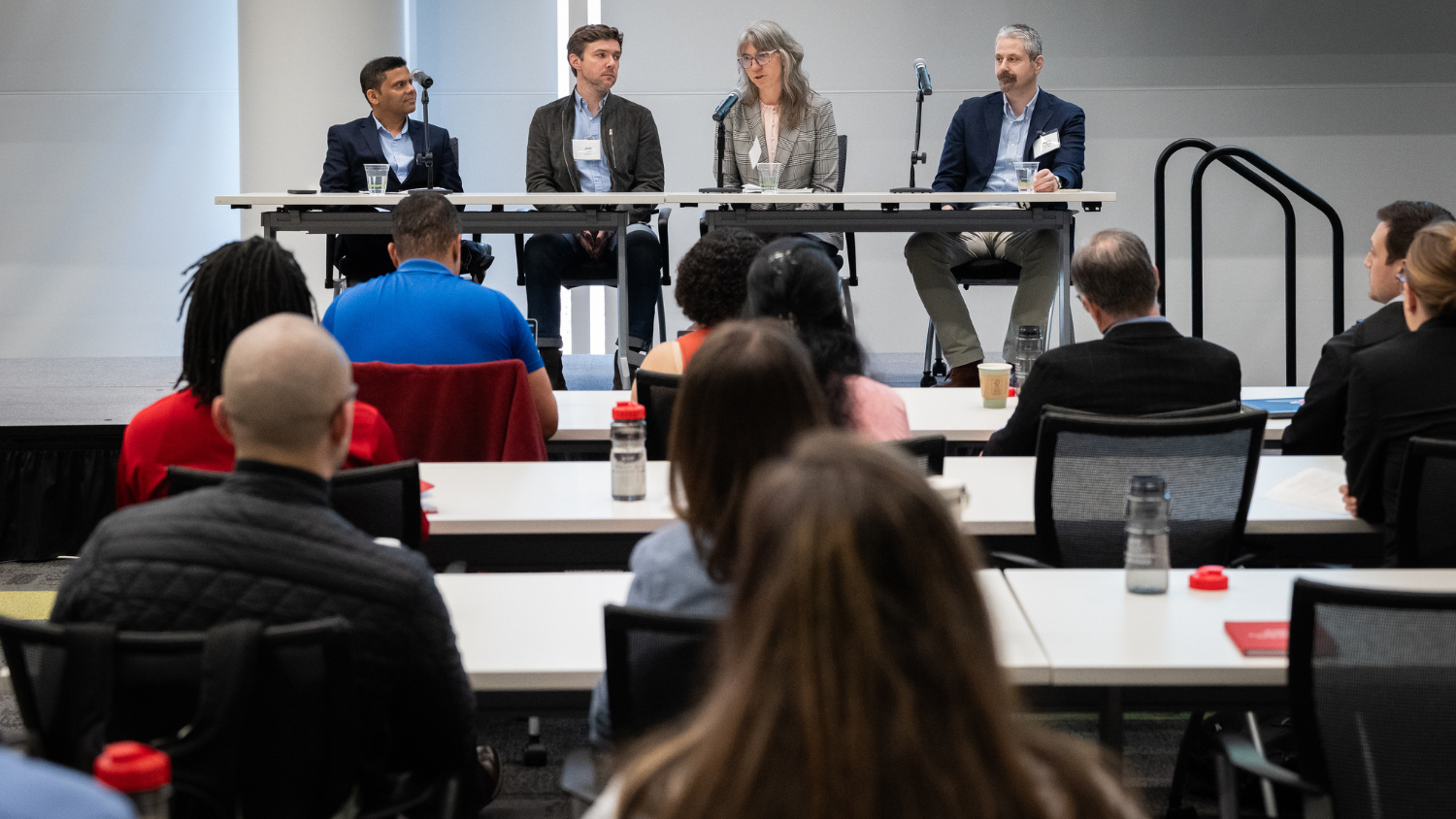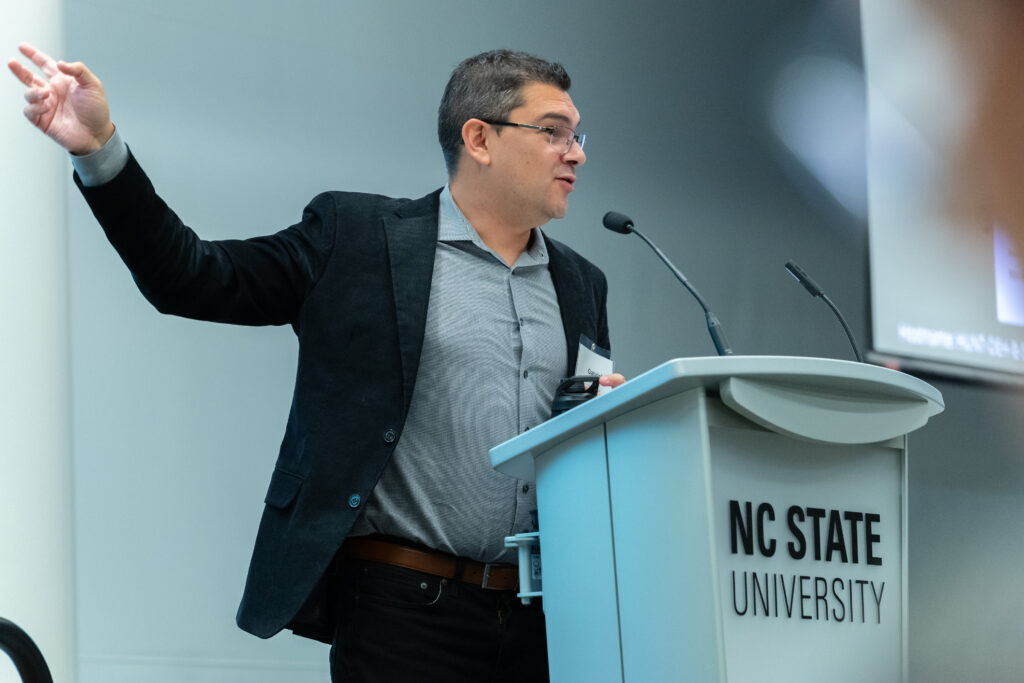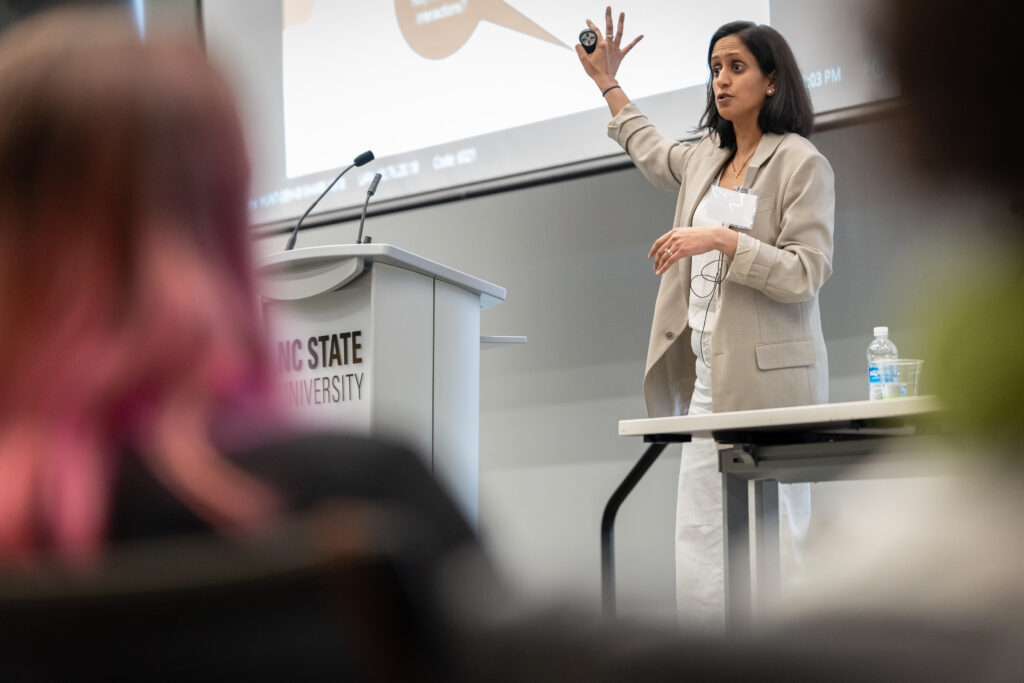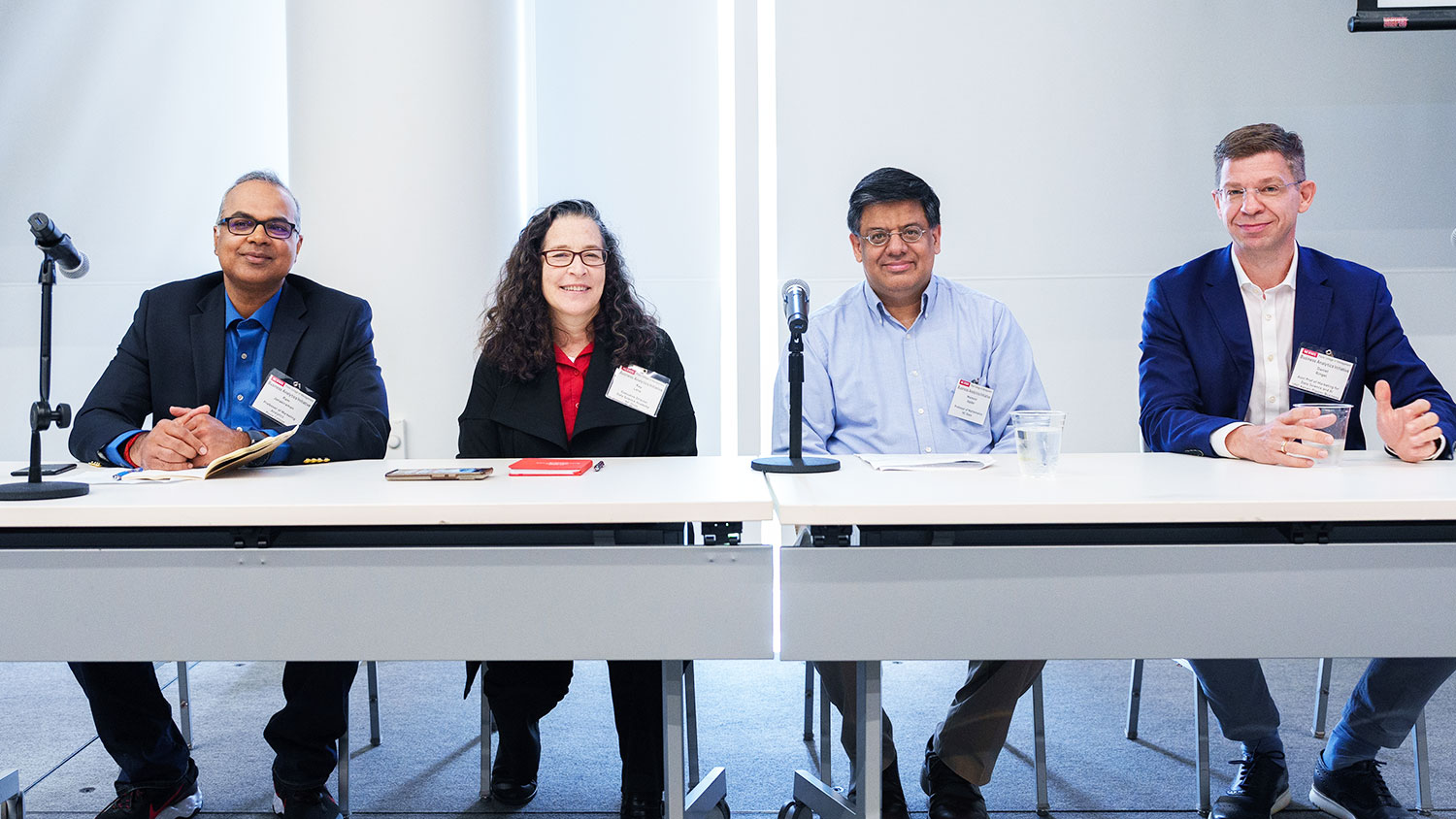BAI Roundtable Explores Data-Driven Transformation
Poole College’s BAI Roundtable brings together analytics professionals and industry leaders to explore cutting-edge strategies and innovations in data-driven decision-making.

What are the future directions of business analytics and artificial intelligence? What innovations are emerging for analytics and decision-making? Industry experts and academics discussed these questions and more at Poole College of Management’s fourth annual Business Analytics and AI Initiative (BAI) Roundtable at Hunt Library on Wednesday, March 19.
Future Directions of Analytics
Gabriel Schön, director of reporting & analytics | head of data at Volvo Group, kicked off the event with an industry keynote presentation discussing his work at Volvo, and the future directions in business analytics. He shared various real-world use cases for analytics within the company and emphasized how different teams are structured and collaborate to drive data-driven decision-making across the organization
“We have data engineers, reporting specialists, data scientists, and others,” he said. “We’re looking for people who are open to learning technologies such as Python or IT skills, but also those who come with their own unique background.”
Schön then compared two specific areas: Market Intelligence and Warranty Analytics. Market intelligence gathers and analyzes external data — like customer trends, competitor actions, and market conditions — to help businesses understand opportunities and threats. Warranty analytics, on the other hand, focuses internally, analyzing product failure, repair claims, and service data to improve product quality, reduce costs, and enhance customer satisfaction. While market intelligence looks outward to guide strategic moves, warranty analytics looks inward to optimize products and services after they’ve been sold.
“Market Intelligence has a much slower analysis turnaround time, it’s more strategic,” he said. “While warranty analytics are more fast-paced because they have a direct impact on the bottom line.”
When discussing the future of business analytics, Schön highlighted that there will be more AI-driven decision intelligence, real-time predictive analytics and hyper personalization technologies that will be integrated into products and services.
He ended with a call to action, emphasizing the need to build the capabilities required to meet these demands.
“Take into account the ecosystem and the human capital when it comes to upskilling.”

Innovations in Business AI
Next on the agenda, attendees heard from a panel of NC State University faculty members who discussed innovations in business artificial intelligence for analytics and decision-making. The panel featured Emily Berglund, professor and associate head for faculty development in the Department of Civil, Construction and Environmental Engineering; Veljko Dubljević, University Faculty Scholar and professor of philosophy and science, technology and society in the Department of Philosophy and Religious Studies; and Joshua Gray, associate professor in the Center for Geospatial Analytics and the Department of Forestry and Environmental Resources.
Together, the panelists discussed how they are incorporating artificial intelligence into their research and in the classroom, and how they are taking an interdisciplinary route.
“I do think working with people from different domains in tandem with the AI tools is going to be the most efficient approach going forward,” Gray said.
During the discussion, panelists highlighted a key tension that often arises when industry and academia collaborate. While both sides bring valuable perspectives, their goals are not always aligned, which can create challenges in partnership efforts.
“The real challenge lies in the differing desired outcomes between each group. Industry values intellectual property, while in academia, the currency is publications. There must be open dialogue and communication about the goals and the value each side brings when working together,” Dubljević said.
The panelists ended by advising students that it is critical to keep learning the basics such as math and coding alongside ethics and philosophy, and that with automation becoming more common, it’s still important to have critical thinking skills and common sense.
“These tools are helpful but they are tools,” said Dubljević. “You’re going to be in for a surprise if everything is passed off to AI, so really do the hard work.”
Berglund also noted that students should take advantage of their studies to learn these new tools in an effective way.
“Take the time to really explore,” she said.
Analytics for Social Good
Next, Jui Ramaprasad, associate professor of information systems at the University of Maryland, brought a human-centric lens to the day’s discussion as the academic keynote speaker. She shared her research, which explores the role of digital platforms, online behavior and data analytics in shaping business decisions and consumer experiences.
“This is a story about missing data,” she said. “A lot of things we do are online, and what happens in physical spaces should be implemented in those digital spaces too.”
Drawing on her expertise in information systems, Ramaprasad shared how technology and data intersect to influence innovation, strategy and social outcomes in today’s digital economy — specifically in the online dating world.
Her work focused on how features like social signals, recommendation algorithms, and design changes influence engagement and trust, using empirical methods and experiments to uncover causal relationships between analytics-driven interventions and user outcomes.
“Women face inhibition in making the first move while men send five times the number of messages first,” she explained. “So, strategies that work for men do not work for women.”
She ended by stressing that making platforms work for everybody so that no groups’ efficiency is expensed.
“Design it differently for everyone,” she said.

Looking Out for Emerging Trends
To round out the day, the “Emerging Trends in Business Analytics” industry panel brought together leaders from across sectors to discuss how data is transforming decision-making, operations and innovation.
Fredy Daza, vice president and country leader for Digital and IT North America at Volvo Group, spoke about the evolving role of analytics in manufacturing and logistics, emphasizing the importance of data integration and digital transformation in driving operational efficiency and sustainability.
“There should be an ongoing auditing of a system or intranet to make sure everything is optimized,” he said.
Chris Paolini, director of business analytics for the Professional Women’s Hockey League, shared how data can provide valuable insights but also create confusion if not approached carefully.
“Data enlightens you but it can confuse you if you don’t know what you are looking for,” he said.
Chris Singleton, vice president and chief information officer for global IT at Loparex, highlighted how business analytics supports agility in global supply chains and manufacturing. He underscored the need for cross-functional collaboration to stay competitive in an increasingly data-driven economy.
“Domain expertise will be way more productive using AI than those who do not, but years of experience can’t always be replicated,” he said. “AI can be an answer, but augment opportunities and experience on a more consistent basis.”
- Categories:


